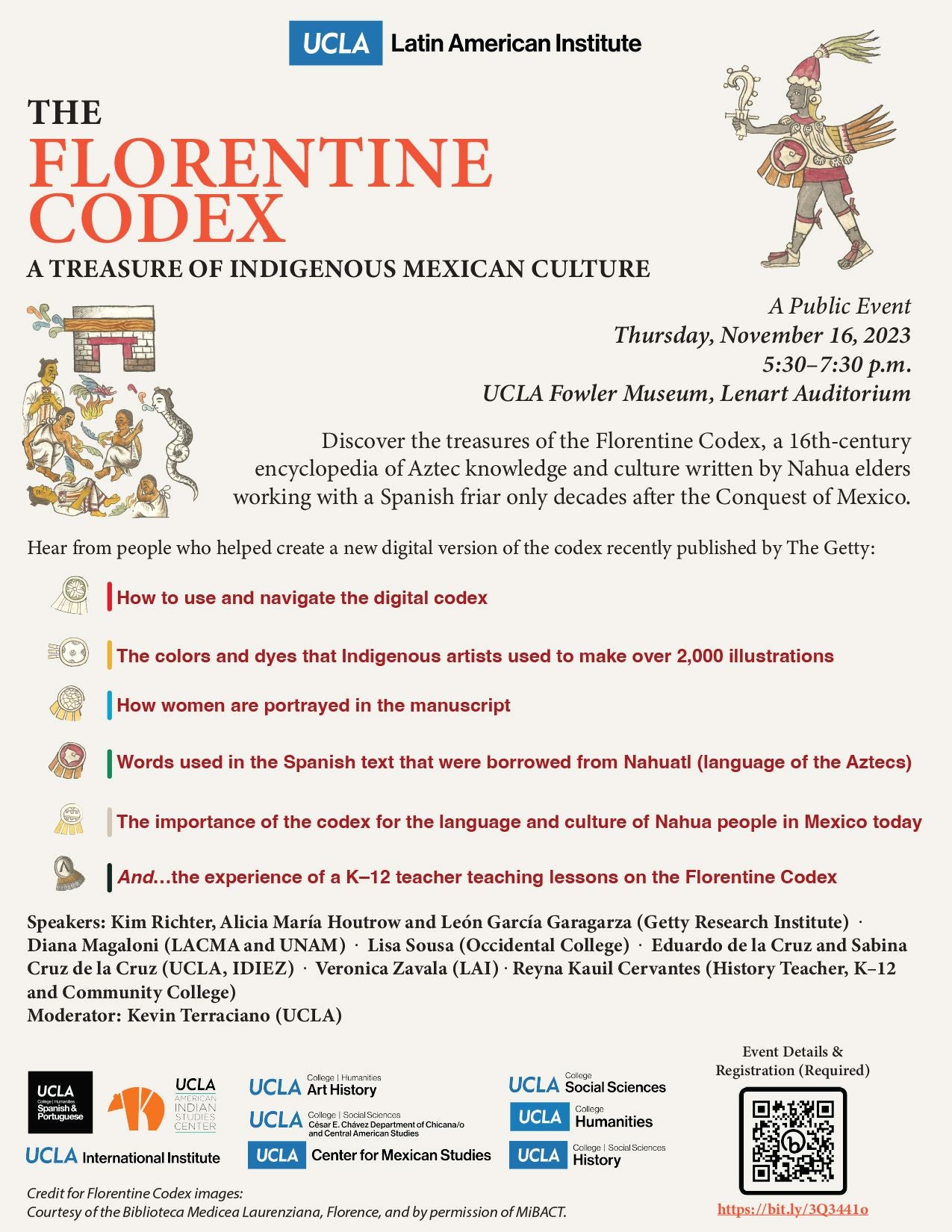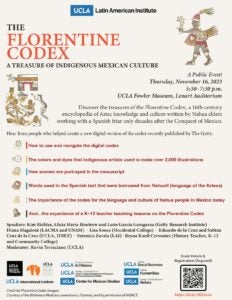
The Florentine Codex: A Treasure of Indigenous Mexican Culture
The UCLA Latin American Institute will host a public event about the Florentine Codex, a 12-book manuscript of Indigenous Aztec (or Nahua) culture and knowledge, on November 16. The evening event will feature many members of the UCLA-trained team who contributed to Getty’s Digital Florentine Codex, a new online edition of the manuscript, who will give short presentations on many unique and fascinating aspects of the codex, including:

> How to use and navigate the digital codex published by Getty on October 26
> The colors and dyes that Indigenous artists used to make the over 2,000 images in the
codex
> How women are portrayed in the manuscript
> Words used in the Spanish text of the codex that were actually borrowed from Nahuatl (the
language of the Aztecs)
> The importance of the codex for the language and culture of the Nahua people of Mexico today
> And… the experience of a K–12 teacher already teaching lessons on the Florentine Codex in her classroom
Opening Remarks: Abel Valenzuela, Interim Dean of Social Sciences, UCLA
Speakers:
Kim Richter, Alicia Maria Houtrow and Leon Garcia Garagarza (Getty Research Institute)
Diana Magaloni (LACMA and UNAM)
Lisa Sousa (Occidental College)
Eduardo de la Cruz and Sabina Cruz de la Cruz (UCLA, IDIEZ)
Veronica Zavala (Latin American Institute, UCLA)
Reyna Kauil Cervantes (History Teacher, K–12 and Community College)
Moderator: Kevin Terraciano (UCLA)
The event is cosponsored by UCLA’s Latin American Institute; American Indian Studies Center; Center for Mexican Studies; César E. Chávez Department of Chicana/o and Central American Studies; Department of History; Department of Spanish & Portuguese; UCLA College, Division of Humanities; UCLA College, Division of Social Sciences; and the UCLA International Institute.
Photo Credit: Lunar eclipse in Book 7 of the Florentine Codex, 1577. (Courtesy of the Biblioteca Medicea Laurenziana, Florence, and by permission of MiBACT.)